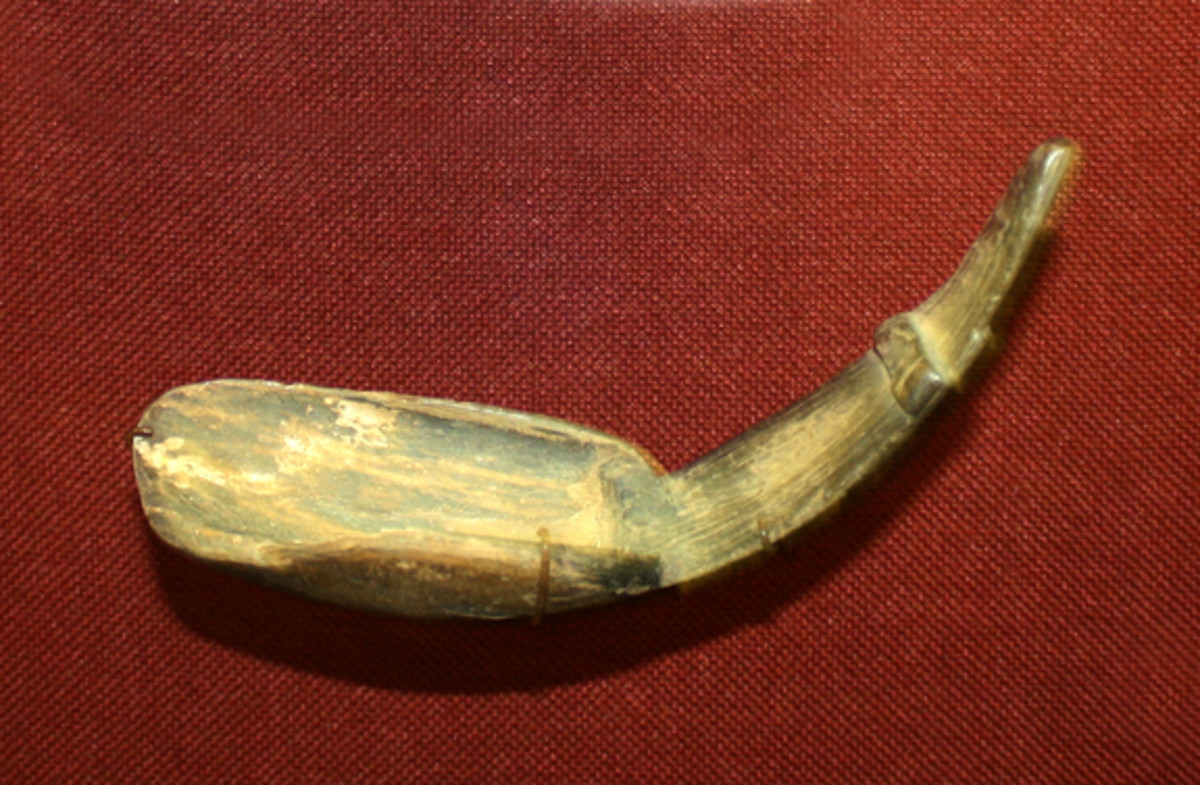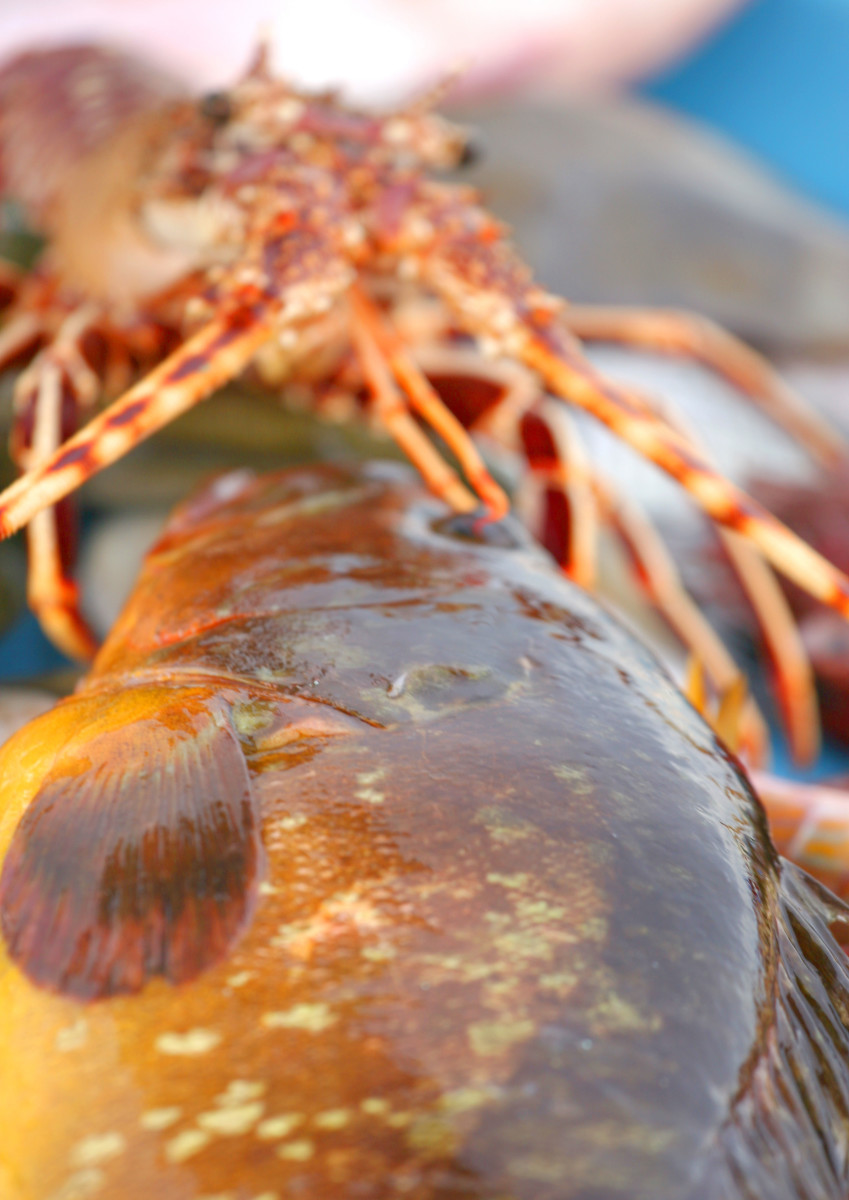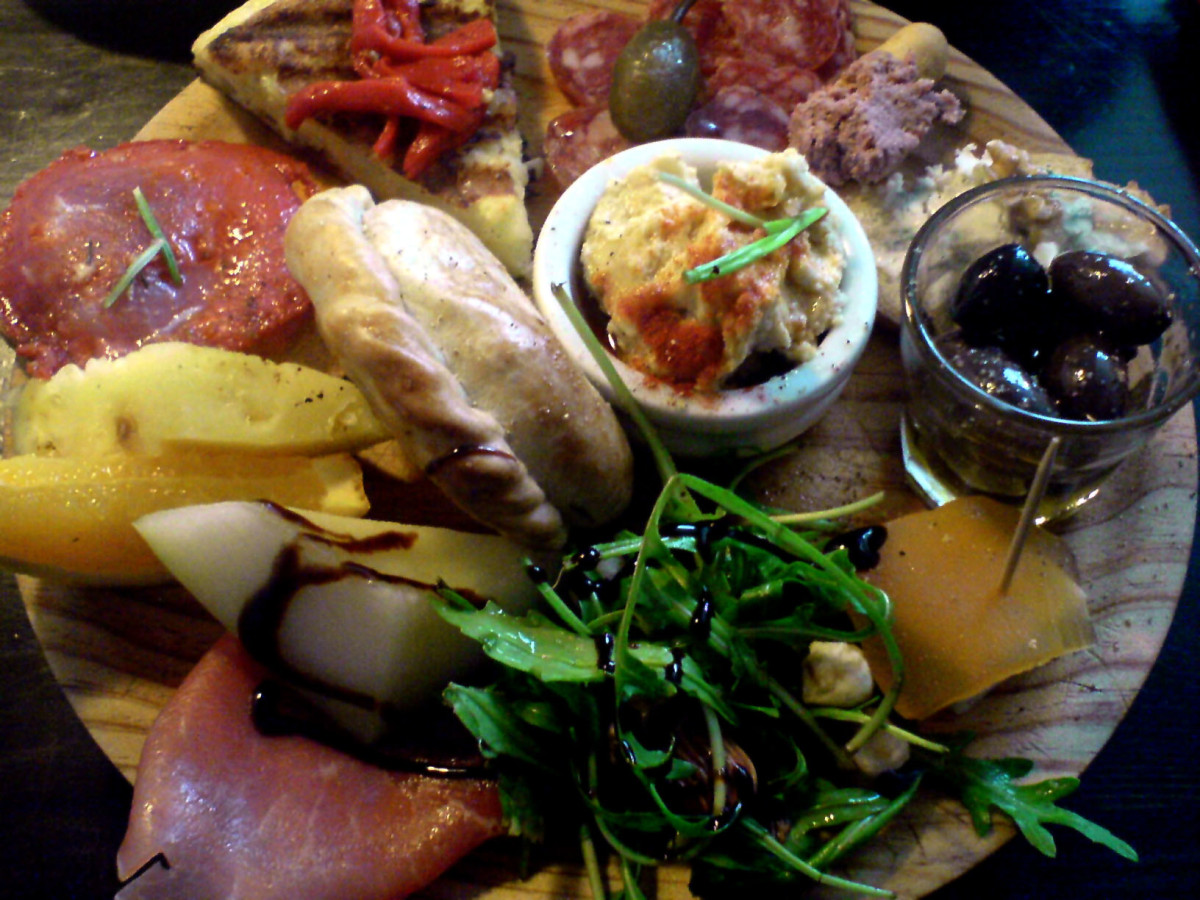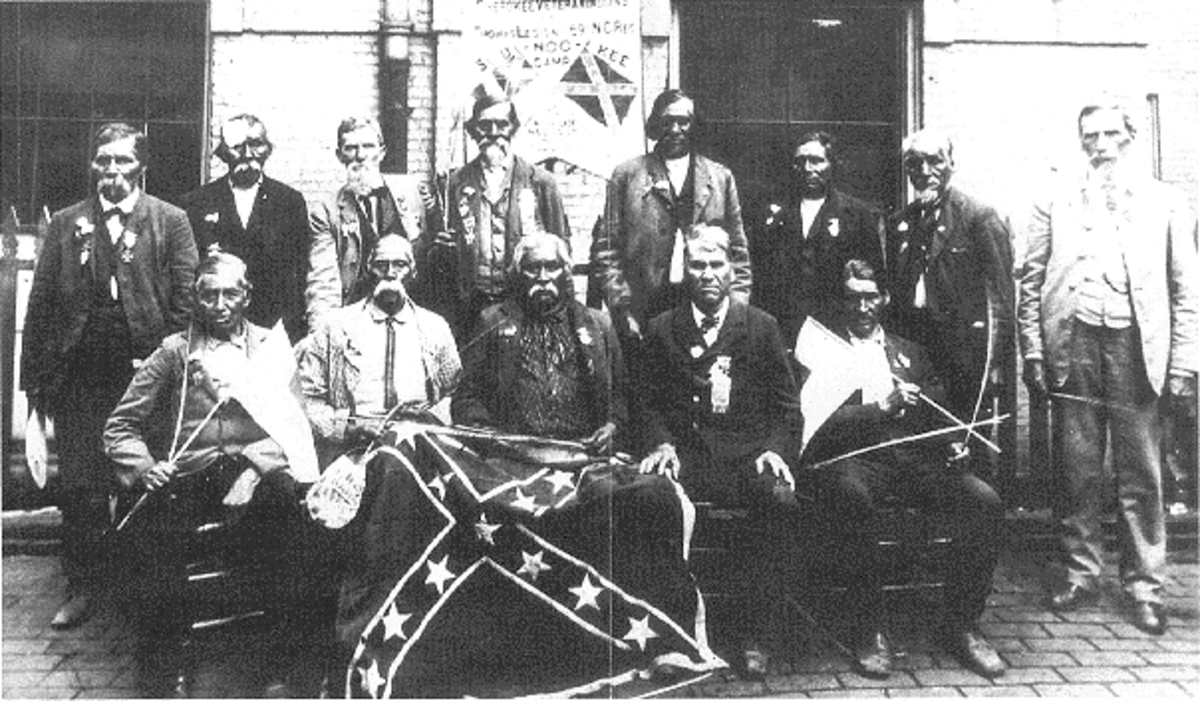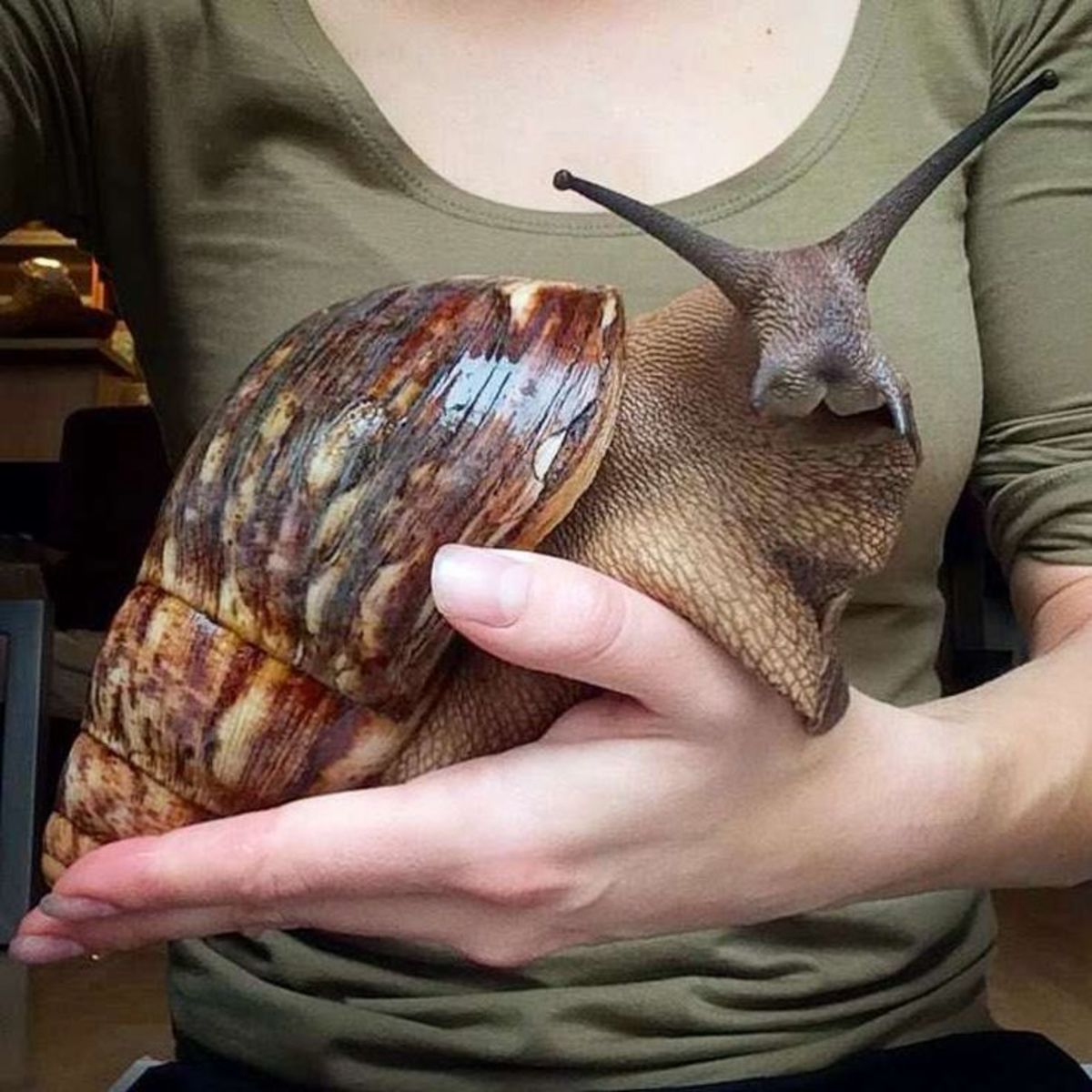All about durians
One of my father's friend sent me an email on how to choose durians and facinated me to write all about durians in my hub. Knowingly, Wikipedia would have the most information but I don't think it could actually stop me from writing anything.
I will always remember, when I was a kid, my dad used to take me and my siblings to Balik Pulau, Penang, Malaysia to eat or buy home durians whenever the durian season arrive. Balik Pulau is well-known for its durian. He took us to the durian estates up in Balik Pulau. He tell us how these durian trees grow and how the durians are harvested. There is a netting bed tied on the durian trees. When the durians are ripe, the durian will fall on the net. He will also tell us to keep away from the trees or the durian will fall on our heads unexpectedly. Definitely, those were the good old days!
Description
Durian is a type of fruit of several tree species which belongs to the genus Durio and the Malvaceae family. It is well-known and referred as the "King of Fruits" in the Southeast Asia. Durian can grow as large as 12 inches long and 6 inches in diameter, weighing 2 to 8 pounds. The shape of durians ranges from oblong to round, the colour of its husk is from green to brown and its flesh pale-yellow to red, depending on the species.
Its edible flesh gives out an identifiable odour, strong and piercing even when the husk is intact. Some people likes the smell of the durian as fragrant but others find the aroma resistless and offensive. The smell makes our reaction from deep appreciation to intense disgust. Its smell has brought the fruit's rejection from certain hotels and public transportations in Southeast Asia.
At different stages of ripeness, the durian's flesh can be consumed and in Southeast Asian cuisines, durians are used to flavour a wide range of savoury and sweet edibles. Wow! Imagine....the seeds can also be eaten when cooked!
History
In the Southeastern Asia during the prehistoric times, durian has been well-known for its fruit but unfortunately, has only been known to the western side of the world for about 600 years. In the European reference, Niccolo Da Conti, who travelled to Southeastern Asia in the 15th Century was recorded to be the earliest to person to know.
Gracia de Orta, a portuguese physician described durians in Colóquios dos Simples e Drogas da India which was published in 1563. In 1741, Geog Eberhard Rumphius, a German botanist published a book titled Herbarium Amboinense, containing the most detailed and accurate account of durians for over a century. It was said that the complex taxonomy of durian has seen the decrease and increase of many species since it was created by Geog Eberhard Rumphius. There were also some confusion between durian and the soursop, for both of these species had thorny green fruit. Interestingly, soursop was noted the Malay name as durian belanda, meaning Dutch durian. Johann Anton Weinmann, during the 18th century, considered that durian to belong to Castaneae as durian was similar to the horse chestnut.
In the 16th century, D. zibethinus was brought in into Ceylon by the Portuguese and was reintroduced many times later. In the Americas, durian tree has been planted but confined to botanical gardens. In 1884, London's most famous botanical gardens, Royal Botanic Gardens, Kew also known as Kew Gardens sent the first seedings to Auguste Saint-Arroman of Dominica.
Since the late 18th century, and commercially since the mid-20th century, in Southeastern Asia, durian has been cultivated at the village level. Edmund James Banfield, a naturalist and also an Australian author, for My Tropic Isle tells how, in the early 20th century, his friend in Singapore sent him a durian seed in which he planted and cared for on his tropical island of the north coast of Queensland.
A book titiled Durian Theory, or the Origin of the Modern Tree was published by E. J. H. Corner, a British botanist in 1949. In his book, it was said that endozoochory (meaning the seduction of animals to transport seeds in their stomach) arose before any method of crop-dusting, and that primitive ancestors of durian species were the earliest practitioners of the spreading method, particularly the red durian which iillustrating the primitive fruit of flowering plants.
In the Association of Southeast Asian Nations region, demand for durian has increased significantly, partly due to the increasing affluence in Asia, domestically and internationally during the early 1990s.
Species
Did you know there are 30 recognised durian species? There are at least nine of which produce edible fruit. The only species available in the international market is Durio zibethinus; other species are sold in their local regions. In the market, many consumers express preferences for special cultivars which fetch higher prices but also there are hundreds of durian cultivars.
Brand names
Clothes, electronic goods, handphones have branded names. Even durians have names too. In Malaysia, especially in Penang (also known as Pearl of Orient) well known for its fruitful durians. Balik Pulau, south-west corner of Penang Island, is the best place to get good durians. Balik Pulau is only 30 minutes drive over the main range and has a lot of durian estates.
The following are the selection of branded durians which was photographed during the 2007 AsiaExplorers Durian Feasts :
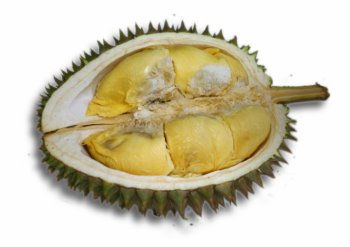
D11
This durian is called "Number Eleven" which was very popular in the 70s. It has creamy yellow flesh with pleasant taste and a subtle smell.
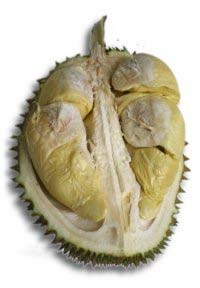
D604
This durian was first cultivated by the late Mr. The Hew Hong of Sungai Pinang, Balik Pulau. The flesh is quite sweet and the seed is small.
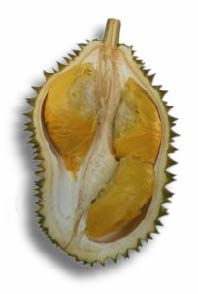
D600
The flesh of this durian has bittersweet taste, with a touch of sourness.
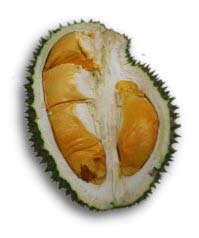
D700
The flesh is darker than D600, like chrome yellow. It is slightly hard, crispy. The smell is not very strong.
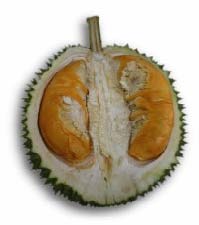
Ang Sim (Red Heart)
This durian is called Ang Sim (Red Heart) because the colour of the flesh is dark yellow; quite soft and very sweet. It has a nice aroma.
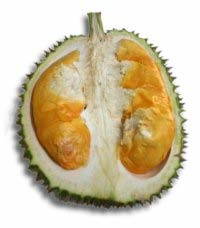
Khun Poh
This durian was named after the late of Mr Lau Khun Poh, who was first budded. Khun Poh has beautiful orangy flesh with a slightly bitter-sweet taste and a heavy aroma.
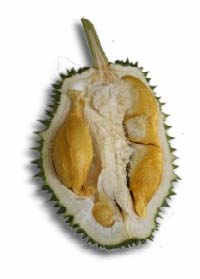
Hor Loh (Water Gourd Durian)
The flesh of this durian is very soft, dry and quite bitter to taste. It has a sharp smell. This durian was first cultivated at Brown Estate of Sungai Ara. It has a resembling appearance of a "Hor Lor" pumpkin. When the durian falls on to the ground, the flesh tends to taste bitter thereafter.
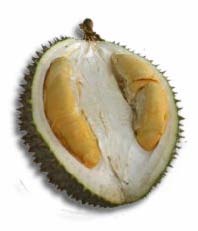
Ang Heh (Red Prawn Durian)
Ang Heh originates from Pondok Upeh, Balik Pulau, Penang and has a round-shaped husk. The orange reddish flesh is highly aromatic, very soft with bitter-sweet taste.
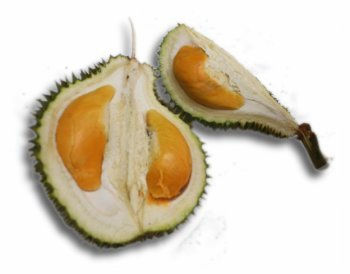
Xiao Hung (Little Red Durian)
This durian is name means Little Red One originating from Sungai Pinang, Balik Pulau. The flesh has bittersweet taste, with a touch of sourness. There are only one or two seeds per section, but the flesh is thick.
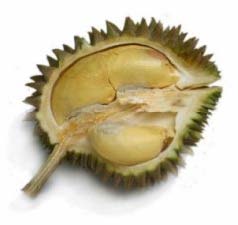
Yah Kang (Centipede Durian)
The flesh is whitish, the taste is superb, milky, like very sweet, melting chocolate. The name 'yah kang' means centipede; making an account of the number of centipede found at the foot of the tree.... giving this durian a rather unusual name.
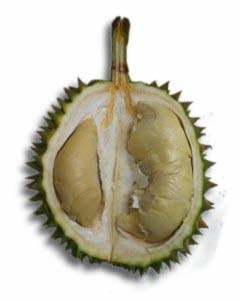
Bak Eu (Pork Fat Durian)
Bak Eu has a slightly acidic aroma. The flesh is whitish while the taste is quite bitter but nice to eat.
The following are durians that were available at Peng Siew Durian Estate in Titi Serong, Balik Pulau, Penang, on the AsiaExplorers Durian Feasts :
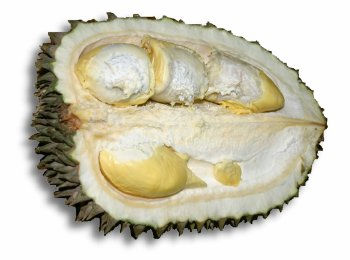
D17
D17 has dark cream flesh with the taste of slightly dry but sweet.
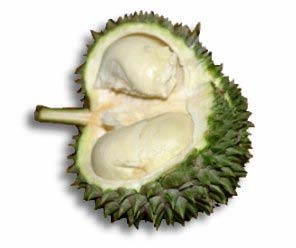
Coupling
This durian gets its unusual name because it looks like two durians joined together. When split this durian splits open, you will thought that the two halves belong to two different durians. Coupling durians have whitish flesh which is slightly dry but tastes good.
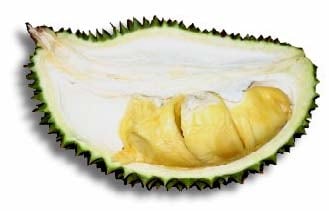
Ooi Kyau (Tumeric Durian)
Ooi Kyau means tumeric. This durian has been described as the flesh is sweet and tasty; colour of the flesh is bright yellow.
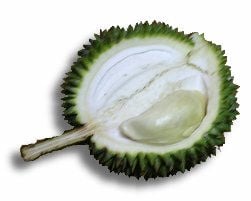
Chaer Phoy (Green Skin Durian)
This durian is shaped like a small canteloupe. The skin of this durian is bright green, giving its name which means 'green skin'. Chaer Phoy's flesh is creamy white; a bit dry and not too sweet but tasty.
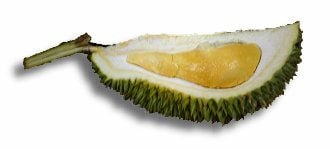
Ang Jin (Red Yoke Durian)
As the name which was given above, this durian has deep orang flesh; sweet and tasty.
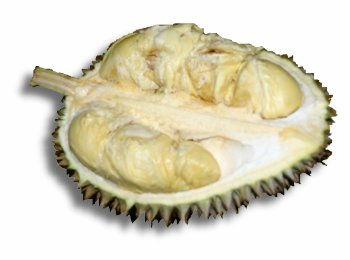
Lin Fong Jiau
This durian was named after Lin Fong Jiau, also known as Mrs Jackie Chan. The taste of this durian is bittersweet.

